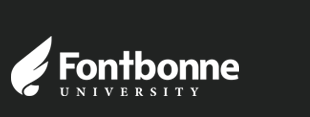
All Theses, Dissertations, and Capstone Projects
Year of Award
1995
Degree
Master of Business Administration (MBA)
College
College of Business & Professional Studies
Degree Program
Business Administration
Department
Business Administration
Keywords
intermodal, rail traffic, trains, railroad, union
Abstract
The nation’s railroads are heading into the 21st century in a position of considerable market strength. Some observers are even talking of the railroads as the mode of the future. This is a scenario that was unimaginable just a few years ago. Serious service problems and shaky financial conditions had left the nation’s railroads in a state of disarray. In the 1980’s, when most companies ran up huge debts, the railroads concentrated on trimming their overhead through cost reductions, system improvements and service enhancements. The result of this is a renewed interest from the nations’ shippers. When asked to explain their rebound from near extinction in the late 1970’s, many rail-industry leaders point squarely at the Staggers Act of 1980. This act has, in large part, deregulated the rail industry. Staggers gave rail carriers new operating capabilities.. Essentially, it allows more freedom to set competitive rates and gave the railroads’ authority to negotiate contracts with shippers. With the return on equity in an excess of eight percent, the railroads have made what many have described as a remarkable turn around. With the development of new intermodal equipment and double stacking capabilities, railroads are beginning to gain a larger share of manufactured goods from other countries such as Mexico and Canada. l 2 There are seven major railroads classified as Class I railroads. The largest of these railroads is Union Pacific, followed by Burlington Northern, Conrail, Norfolk Southern, CSX, Southern Pacific, and Santa Fe. Class I railroads are railroads with revenues in excess of $250 million a year. The railroads rely heavily on coal, grain, and chemicals. They are intending to increase their market share of manufactured goods through strategic partnerships with truckload carriers. This will enable them to offer door-to-door service to all the major markets. I will examine each railroad by its ranking in size and its position in the market both domestically and internationally. Exploration of the revenue growth of these railroads and their position for growth in the future will also be discussed. I will review each railroads’ position with truckload carriers in the ever expanding intermodal market. Since intermodal traffic is beginning to congest in the major intermodal terminals, the future growth of intermodalism is in jeopardy. Some of the problems and some possible solutions affecting intermodal and its growth will be explored.
Document Type
Restricted Thesis
Recommended Citation
Eckelkamp, Dennis F., "A Prespective on the US Rail Freight Industry" (1995). All Theses, Dissertations, and Capstone Projects. 187.
https://griffinshare.fontbonne.edu/all-etds/187
Restricted
Available to Fontbonne users only. Please log in with your id + password.
If you are the author of this work and would like to make it openly accessible to all, please click the button above.



